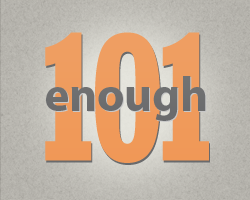
Editor’s Note: This post is a brief history, intended to provide a contextual background for understanding the complex issues that the Enough Project works on. It is part of the series Enough 101.
Acronyms to Know
MNC – Le Movement Nationale Congolaise
ANC – Armée Nationale Congolaise
The Democratic Republic of the Congo, also known as the DRC, is referred to as “Congo” on Enough Said and in the Enough Project’s publications (not to be confused with the Republic of the Congo, a small country west of the Congo).
Colonialism: 1400s-1960
Portuguese travelers in the 15th century noted that the Kingdom of Kongo had a population close to half a million people and was a highly developed state at the center of an extensive trading network.
In 1885 at the Conference of Berlin, King Leopold II of Belgium formally acquired rights to the Congo territory, 75 times the size of Belgium. King Leopold was the first European to exploit Congo’s people and rich natural resources. Rubber and ivory quotas were imposed on every village and forced labor was universal. The Force Publique (the mostly Congolese army led by European commanders to impose Leopold’s will) was notorious for cutting off the hands of non-complying villagers.
For 23 years, the Congo was King Leopold’s personal possession. Eventually his horrifying human rights abuses were exposed, and in 1908 the Belgian parliament caved to international pressure and took over administration of the territory.
Under Belgian colonialism, Congolese people remained repressed (unable to own land, vote, or travel freely), but the country’s government and infrastructure improved.
By the Second World War, production and profits had risen to the point where the Congo was Africa's richest colony. By 1959, the year before independence, the Belgian Congo was producing 10 percent of the world's copper, 50 percent of its cobalt and 70 percent of industrial diamonds.
Independence to Dictatorship: 1960-1996
Despite its impressive infrastructure, the Congo was ill-prepared when it claimed independence in 1960. There were only 16 Congolese university graduates in the country–the Belgians had trained clerks, but not leaders.
Patrice Lumumba led a nationalist movement (Le Movement Nationale Congolaise, or MNC) that won the first parliamentary elections. The country was immediately thrown into turmoil, with various secessionist movements and vying political powers.
From 1960-1964, the United Nations Mission to the Congo, or ONUC, deployed in an effort to maintain stability in the newly formed nation.
Just a few months after obtaining the presidency, Lumumba was deposed by Army Commander Joseph Mobutu, and just two months later was murdered by a Katangan secessionist regime, with involvement of Belgian authorities. Many believe the United States was also involved. Mobutu took control of the government in a coup powered by the Armée Nationale Congolaise, or ANC, in November 1965.
Fearing a Cuban-style communist transition in the Congo, the United States supported Joseph Mobutu’s coup and subsequent dictatorship. Under Mobutu the country devolved into a brutal kleptocracy. Mobutu was guilty of severe human rights abuses and embezzled millions of state dollars into Swiss bank accounts.
In 1971 Mobutu renamed the country Zaire.
With the end of the Cold War, U.S. support of Mobutu’s brutal dictatorship waned. Mobutu ruled the Congo until he was overthrown in 1997.
For more information and to see the sources used in this post, check out the Enough Project's Congo Pinterest Board.

